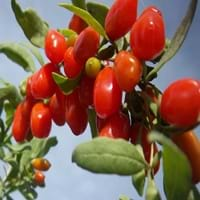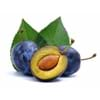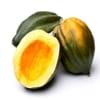Health Benefits
Cancer prevention, Improves eye vision, Prevents diabetes, Prevents high blood pressure
Anti-oxidant properties, Eye care, Helps in cartilage regeneration, Regulates Blood Sugar, Treatment of osteoarthritis
General Benefits
Cures inflamed tonsils, Helps in weight loss, Maintains healthy cholesterol level
Boosts immune system, Digestive aid
Skin Benefits
Anti-aging benefits, Protects skin from oxidative stress
Anti-aging benefits, Reduces wrinkles, Treatment of skin diseases
Hair Benefits
Protects hair
Protects hair, Regulates hair growth
Allergy Symptoms
Anaphylaxis, Coughing, Diarrhea, Eczema, Hives, Itching sensation in throat, Nausea, Skin Rashes, Runny nose, Sneezing, Swelling of mouth, tongue or lips, Vomiting, Wheezing
Anaphylaxis, Itching, Sneezing, Wheezing
Side Effects
Heart burn
May interact with some drugs
Best Time to Eat
Along with meal, As a snack in the late afternoon, Don't consume at night and before bed, Don't eat after meal, Morning time (before lunch)
Any time except an hour after meal, Don't consume at night and before bed
Vitamin B5 (Pantothenic Acid)
Vitamin C (Ascorbic Acid)
Vitamin K (Phyllochinone)
Calories in Fresh Fruit with Peel
Not Available
Calories in Fresh Fruit without Peel
Not Available
Calories in Frozen Form
Not Available
Calories in Canned Form
Not Available
Type
Fruit vegetable
Berry
Season
All seasons
Autumn
Varieties
Tamarillo bold gold, Tamarillo red beau, Tamarillo tango and Tamarillo teds red
No Types
Color
Orange, Red, Yellow
Scarlet red
Inside Color
Creamy Yellow
Orange
Taste
Tangy, Tart
Slightly bitter, Tart
Origin
South Africa
Unknown
Soil Type
Sandy loam, Well-drained
Well-drained
Climatic Conditions
Rainfall, Warm
Cold, Hot
Facts about
- Up until 1967, tamarillos were referred to as tree tomatoes.
- The name tamarillo is derived from Maori word 'tama' which means leadership and rillo from spanish word 'amarillo' which means yellow.
- Study says a man named Li Qing Yuen used to eat goji berries daily and lived for 252 years.
- They are also known as wolfberries in India & China.
- This fruit is used for spiritual purposes at many places.
Top Producer
New Zealand
China
Other Countries
Australia, Chile, Colombia, Malaysia, Peru, Philippines
Canada, France, India, United States of America
Top Importer
United States of America
United States of America
Top Exporter
New Zealand
China
Botanical Name
Solanum betaceum
Lycium barbarum
Synonym
tree tomato, genus Cyphomandra, Cyphomandra
Wolfberry
Subkingdom
Tracheobionta
Tracheobionta
Division
Magnoliophyta
Unknown
Class
Magnoliopsida
Unknown
Subclass
Asteridae
Asteridae
Order
Solanales
Solanales
Family
Solanaceae
Solanaceae
Species
Solanum betaceum
L. barbarum
Generic Group
Nightshade
Not Available
Difference Between Tamarillo and Gojiberry
We might think that Tamarillo and Gojiberry are similar with respect to nutritional value and health benefits. But the nutrient content of both fruits is different. Tamarillo and Gojiberry Facts such as their taste, shape, color, and size are also distinct. The difference between Tamarillo and Gojiberry is explained here.
The amount of calories in 100 gm of fresh Tamarillo and Gojiberry with peel is Not Available and 32.00 kcal and the amount of calories without peel is 31.00 kcal and Not Available respectively. Thus, Tamarillo and Gojiberry belong to Low Calorie Fruits and Low Calorie Fruits category.These fruits might or might not differ with respect to their scientific classification. The order of Tamarillo and Gojiberry is Solanales and Solanales respectively. Tamarillo belongs to Solanaceae family and Gojiberry belongs to Solanaceae family. Tamarillo belongs to Solanum genus of Solanum betaceum species and Gojiberry belongs to Lycium genus of L. barbarum species. Beings plants, both fruits belong to Plantae Kingdom.









